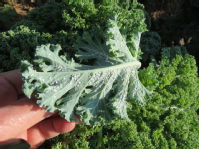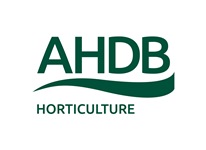All entries for October 2015
October 27, 2015
Aphid and Turnip yellows virus News
Brassica virus and peach potato aphid update from Wellesbourne, Warwickshire:
- 12-19/10/2015. No M. persicae were caught (12 yellow water traps).
- 12-18/10/2015. From the Rothamsted Insect Survey suction trap catch, no M. persicae were caught.
Brassica virus and peach potato aphid update from Kirton, Lincolnshire:
- 12-19/10/2015. 2 Individuals of M. persicae were caught (12 yellow water traps), 1 of these individuals was carrying TuYV.
- 12-18/10/2015. From the Rothamsted Insect Survey suction trap catch, 2 individuals of M. persicae were caught (12 yellow water traps), 1 of these individuals was carrying TuYV.
Turnip Yellows Virus (TuYV), formerly known as Beet western yellows virus, is a very important pathogen of vegetable brassicas and oilseed rape. It is spread by the peach potato aphid (Myzus persicae). This data is collected with funding from the BBSRC Horticulture And Potato Initiative (HAPI).
Press release on the new round of HAPI projects involving the University of Warwick
Diana Katschnig and Angela Hambidge, Plant-Virus Interactions Group, University of Warwick
October 20, 2015
Aphid and Turnip yellows virus News
Brassica virus and peach potato aphid update from Wellesbourne, Warwickshire:
- 5-12/10/2015. One individual of M. persicae was caught (12 yellow water traps). This individual was carrying TuYV.
- 5-11/10/2015. From the Rothamsted Insect Survey suction trap catch, no M. persicae were caught.
Brassica virus and peach potato aphid update from Kirton, Lincolnshire:
- 5-12/10/2015. 19 Individuals of M. persicae were caught (12 yellow water traps), 13 of these individuals (68%) were carrying TuYV.
- 5-11/10/2015. From the Rothamsted Insect Survey suction trap catch, 11 individuals of M. persicae were caught (12 yellow water traps), 9 of these individuals (82%) were carrying TuYV.
Turnip Yellows Virus (TuYV), formerly known as Beet western yellows virus, is a very important pathogen of vegetable brassicas and oilseed rape. It is spread by the peach potato aphid (Myzus persicae). This data is collected with funding from the BBSRC Horticulture And Potato Initiative (HAPI).
Press release on the new round of HAPI projects involving the University of Warwick
Diana Katschnig and Angela Hambidge, Plant-Virus Interactions Group, University of Warwick
October 13, 2015
Pest update from Wellesbourne
Today we found:
- 0 male and 3 female cabbage root flies (3 water traps)
- 24 bean seed flies (3 traps)
- 10 carrot flies (3 traps)
- 1 cabbage root fly egg (15 cauliflower plants)
We will only be trapping carrot fly from now onwards.
Aphid and Turnip yellows virus News
Brassica virus and peach potato aphid update from Wellesbourne, Warwickshire:
- 28/09-5/10/2015. No M. persicae were caught (12 yellow water traps).
- 28/09-4/10/2015. From the Rothamsted Insect Survey suction trap catch, no M. persicae were caught.
Brassica virus and peach potato aphid update from Kirton, Lincolnshire:
- 28/09-5/10/2015. 17 Individuals of M. persicae were caught (12 yellow water traps), 12 of these individuals (71%) were carrying TuYV.
- 28/09-4/10/2015. From the Rothamsted Insect Survey suction trap catch, 2 individuals of M. persicae were caught (12 yellow water traps). One of these individuals was carrying TuYV.
Turnip Yellows Virus (TuYV), formerly known as Beet western yellows virus, is a very important pathogen of vegetable brassicas and oilseed rape. It is spread by the peach potato aphid (Myzus persicae). This data is collected with funding from the BBSRC Horticulture And Potato Initiative (HAPI).
Press release on the new round of HAPI projects involving the University of Warwick
Diana Katschnig and Angela Hambidge, Plant-Virus Interactions Group, University of Warwick
October 09, 2015
Update on Rothamsted suction trap captures
The latest edition of the Rothamsted Suction Trap Bulletin is attached and relates to the week ending 4 October. In general the numbers of aphid species important to vegetable and salad crops remain low.
However, numbers of willow-carrot aphid are increasing and these my be individuals returning to the overwintering host (willow).
Pest update from Wellesbourne
Today we found:
- 0 male and 4 female cabbage root flies (3 water traps)
- 7 bean seed flies (3 traps)
- 7 carrot flies (3 traps)
- 1 cabbage root fly egg (15 cauliflower plants)
- 4 brassica flea beetles (3 traps)
October 07, 2015
Pest update from Wellesbourne
Yesterday we found:
- 1 male and 11 female cabbage root flies (3 water traps)
- 48 bean seed flies (3 traps)
- 8 carrot flies (3 traps)
- 5 cabbage root fly eggs (15 cauliflower plants)
- 8 brassica flea beetles (3 traps)
- 5 small white butterflies (3 traps)
October 06, 2015
Aphid and Turnip yellows virus News
Brassica virus and peach potato aphid update from Wellesbourne, Warwickshire:
- 24-28/09/2015. One individual of M. persicae was caught (12 yellow water traps). This individual was not carrying TuYV.
- 21-27/09/2015. From the Rothamsted Insect Survey suction trap catch, no M. persicae were caught.
Brassica virus and peach potato aphid update from Kirton, Lincolnshire:
- 24-28/09/201. 14 Individuals of M. persicae were caught (12 yellow water traps), 12 of these individuals (86%) were carrying TuYV.
- 21-27/09/2015. From the Rothamsted Insect Survey suction trap catch, 2 individuals of M. persicae were caught (12 yellow water traps), both these individuals (100%) were carrying TuYV.
Turnip Yellows Virus (TuYV), formerly known as Beet western yellows virus, is a very important pathogen of vegetable brassicas and oilseed rape. It is spread by the peach potato aphid (Myzus persicae). This data is collected with funding from the BBSRC Horticulture And Potato Initiative (HAPI).
Press release on the new round of HAPI projects involving the University of Warwick
Diana Katschnig and Angela Hambidge, Plant-Virus Interactions Group, University of Warwick
October 03, 2015
Pest update from Wellesbourne
Yesterday we found:
- 0 male and 7 female cabbage root flies (3 water traps)
- 38 bean seed flies (3 traps)
- 4 carrot flies (3 traps)
- 3 cabbage root fly eggs (15 cauliflower plants)
- 10 brassica flea beetles (3 traps)
- 17 small white butterflies (3 traps)
Cabbage whitefly is abundant on our plots of kale. There is a small infestation of currant-lettuce aphid on our trial plots. Cabbage aphid numbers are building up in some of our brassica plots.
October 02, 2015
Update on Rothamsted suction trap captures
The latest edition of the Rothamsted Suction Trap Bulletin is attached and relates to the week ending 27 September. In general the numbers of aphid species important to vegetable and salad crops remain low.
 Diana Katschnig
Diana Katschnig

 Please wait - comments are loading
Please wait - comments are loading

 Loading…
Loading…
